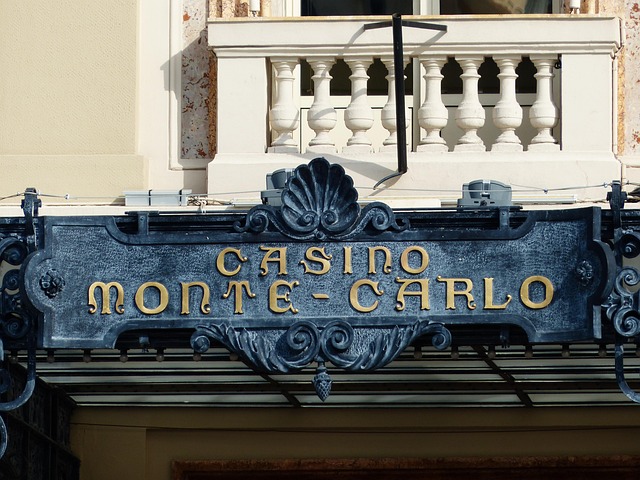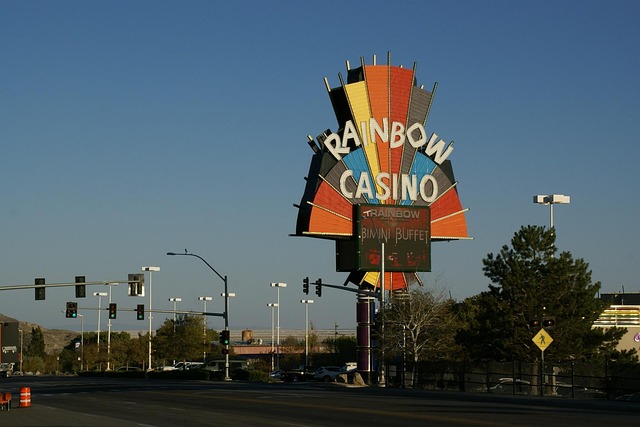Brick and mortar casinos have evolved from simple gambling hubs into multifaceted entertainment centers, offering diverse attractions, luxurious amenities, and immersive experiences. While online gambling has gained popularity, traditional casinos remain competitive due to their social atmosphere and unique offerings like live music, dining, and personalized service. The future of casino entertainment lies in merging physical and digital experiences using technologies like Virtual Reality (VR) and Augmented Reality (AR), creating interactive hubs that combine convenience with novel in-person experiences.
In the competitive realm of entertainment, brick-and-mortar casinos have evolved from traditional gaming hubs to vibrant, bustling centers that offer far more than just slot machines and poker tables. This article delves into the transformation of these physical spaces, exploring their transition from conventional to modern entertainment hubs. We uncover the reasons behind their enduring appeal despite the rise of digital alternatives and preview the future of casino entertainment as physical and digital experiences merge, promising exciting innovations for both veteran players and new folks alike.
- The Evolution of Brick and Mortar Casinos: From Traditional to Modern Entertainment Hubs
- Unlocking the Appeal: Why Physical Casinos Still Draw Crowds
- The Future of Casino Entertainment: Merging Physical and Digital Experiences
The Evolution of Brick and Mortar Casinos: From Traditional to Modern Entertainment Hubs

The traditional brick-and-mortar casino has undergone a remarkable transformation over the years, evolving from a simple space for gambling to a complex entertainment hub. In the early days, casinos were primarily focused on games of chance, with a limited array of options such as slot machines, roulette, and blackjack. The atmosphere was often dimly lit, with a smoke-filled environment that reflected the societal norms of the time. However, as society changed, so did casinos, embracing modern trends and technological advancements.
Today’s brick-and-mortar casinos offer a wide range of entertainment options beyond traditional gambling. They have become destinations for dining, luxury accommodations, live music, and cultural events. The design and ambiance have also evolved, with many casinos adopting sleek and stylish interiors, incorporating state-of-the-art lighting and sound systems to create immersive experiences. These modern brick-and-mortar casinos cater to a diverse range of visitors, offering something for everyone from casual players to high rollers, ensuring their relevance in the competitive entertainment industry.
Unlocking the Appeal: Why Physical Casinos Still Draw Crowds

In an era dominated by online gambling and digital entertainment, one might question the enduring appeal of physical casinos. However, brick-and-mortar casinos continue to draw crowds in significant numbers, offering an immersive experience that cannot be replicated virtually. The human element is a key factor; the buzz of the casino floor, the interaction with fellow players, and the personalized service from dealers create a social atmosphere unlike any other. This sense of community and camaraderie fosters a unique entertainment experience.
Additionally, physical casinos offer a level of sophistication and luxury that online platforms struggle to match. From exquisite interior designs to top-notch dining options and entertainment shows, these establishments provide an all-encompassing getaway. The convenience of accessing these amenities without digital distractions contributes to their popularity. Many visitors appreciate the escape from screens and technology, allowing them to indulge in a different kind of pleasure, one that stimulates the senses and creates lasting memories.
The Future of Casino Entertainment: Merging Physical and Digital Experiences

The future of casino entertainment lies in merging the physical and digital realms, creating immersive experiences that transcend traditional boundaries. As technology advances, brick-and-mortar casinos are no longer just about spinning reels and dealing cards; they’re becoming interactive hubs that blend real-world interactions with online gaming’s convenience and diversity. Virtual reality (VR) and augmented reality (AR) technologies offer endless possibilities, from simulating casino environments in the comfort of home to enhancing on-site experiences with digital overlays.
This fusion allows players to enjoy their favorite games in novel ways, whether it’s through live dealer interactions supported by AR enhancements or VR slots that transport users to fantastical worlds. The integration also opens up new avenues for personalization, where casinos can tailor experiences based on individual preferences and behaviors, much like online gaming platforms already do. Such innovations promise to keep casino entertainment dynamic and appealing in an increasingly digital world.
Brick and Mortar Casinos have evolved significantly, transforming from traditional gambling hubs into modern entertainment complexes. Despite the rise of online gaming, physical casinos continue to draw crowds due to their immersive atmosphere, social interactions, and diverse offerings. As we look towards the future, the merging of physical and digital experiences promises to revolutionize casino entertainment once again, creating innovative hybrid models that cater to evolving consumer preferences.






